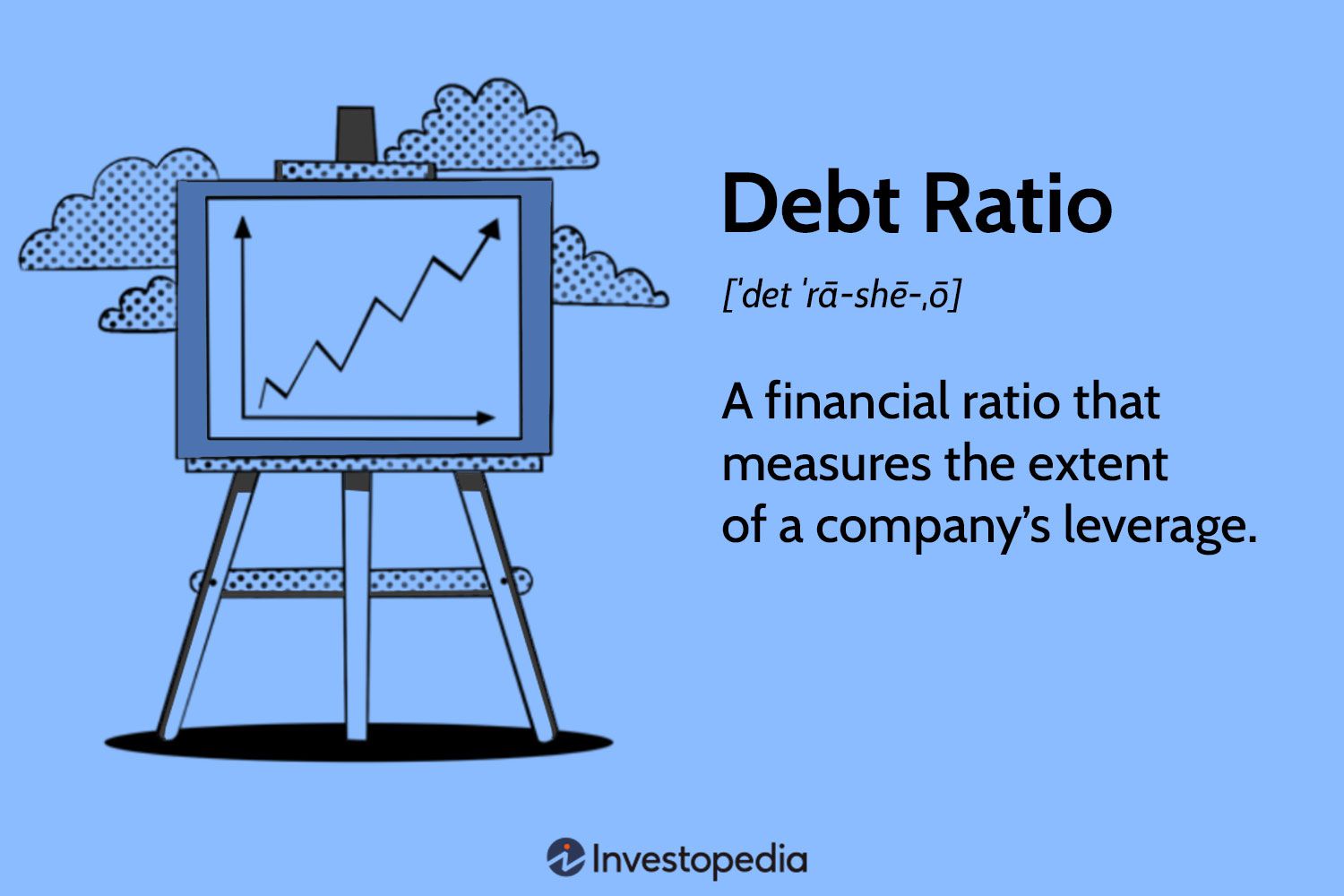Debt to Equity Ratios
Debt to equity ratios! If you’ve ever wondered how companies manage their finances or if you’re looking for ways to evaluate a company’s financial health, then this article is for you. Debt to equity ratios play a crucial role in understanding and analyzing the financial stability of a company. In this post, we will take a deep dive into what these ratios mean, how they are calculated, and why they are so important in assessing company finances. So grab your calculators and get ready to make sense of those numbers! Let’s jump right in!
Why Debt to Equity Ratios are Important in Analyzing Company Finances
When it comes to analyzing a company’s finances, one important metric that investors and analysts often look at is the debt to equity ratio. This ratio provides valuable insights into how a company has financed its operations and whether it relies more on debt or equity for funding.
The debt to equity ratio is calculated by dividing a company’s total liabilities (including both short-term and long-term debts) by its shareholders’ equity. The resulting number shows the proportion of financing that comes from creditors compared to shareholders.
Why is this ratio so important? Well, it helps stakeholders assess the financial health of a company and evaluate its risk profile. A high debt to equity ratio indicates that a significant portion of the company’s funding comes from external sources, which may increase its financial risk if interest rates rise or if there are economic downturns.
By analyzing this key metric in conjunction with other financial indicators such as profitability ratios, liquidity ratios, and cash flow analysis, investors can gain a comprehensive understanding of how well-positioned a company is for future growth or potential challenges.
Understanding the importance of debt to equity ratios allows investors to make informed decisions about buying or selling stocks in specific companies. It also helps lenders determine whether they should extend credit or loans based on an evaluation of risk levels associated with excessive reliance on borrowed funds.
Debt to Equity Ratios offer valuable insights into how companies finance their operations and manage risks associated with different capital structures. By assessing these ratios alongside other financial metrics, stakeholders can make sound investment decisions while minimizing their exposure to unnecessary risks
Calculating and Understanding the Ratio
Calculating and understanding the debt to equity ratio is essential for gaining insights into a company’s financial health. This ratio helps investors and analysts assess a company’s capital structure, risk profile, and ability to handle its debt obligations.
To calculate the debt to equity ratio, you simply divide the total liabilities of a company by its shareholders’ equity. The resulting number indicates how much of a company’s funding comes from debt compared to equity. A higher ratio suggests that the company relies more heavily on borrowed funds, which can increase financial risk.
Understanding this ratio requires context. Different industries have varying levels of leverage depending on their business models and capital requirements. For example, capital-intensive industries like manufacturing or telecommunications may have higher ratios compared to service-based sectors.
Analyzing trends in the debt to equity ratio over time is key. Increasing ratios could indicate that a company is taking on more debt relative to its equity base, potentially signaling financial distress or an aggressive growth strategy.
While calculating and understanding the debt-to-equity ratio provides valuable insights into a firm’s finances, it should not be used as an isolated measure when assessing investment opportunities or making business decisions. It should be considered alongside other financial metrics such as profitability ratios, liquidity measures, cash flow analysis, market conditions, competitive landscape evaluations,
In conclusion (outside word count), mastering the calculation and interpretation of the debt-to-equity ratio empowers investors with crucial information about companies they are interested in investing in while considering broader industry trends; however it must always be utilized alongside other relevant data points for comprehensive decision-making.
Interpreting Debt to Equity Ratios: What Do They Mean?
When it comes to analyzing a company’s finances, one of the key metrics that investors and analysts often look at is the debt to equity ratio. But what exactly does this ratio mean? And how can we interpret it in order to gain insights into a company’s financial health?
The debt to equity ratio is essentially a measure of a company’s financial leverage. It compares the amount of debt the company has taken on with its shareholders’ equity. In simple terms, it shows us how much of a company’s financing comes from borrowed funds versus investments made by shareholders.
Interpreting this ratio requires understanding its implications. A high debt to equity ratio suggests that the company relies heavily on borrowed funds, which may indicate higher risk and potential financial distress. On the other hand, a low debt to equity ratio implies that the company has more stable financing and may be less vulnerable to economic downturns.
However, interpreting this ratio should not be done in isolation. It is important to consider industry norms and compare ratios across companies within the same sector. For example, certain industries such as utilities or real estate tend to have higher levels of debt compared to others like technology or healthcare.
Interpreting debt-to-equity ratios involves considering both absolute values and relative comparisons within an industry context. This analysis helps investors understand whether a company’s balance between borrowing and shareholder investment aligns with their risk tolerance and long-term objectives.
How Companies Use Debt to Equity Ratios
Companies utilize debt to equity ratios as a valuable tool in evaluating their financial health and stability. By analyzing this ratio, businesses can gain insights into how much of their funding comes from external sources versus internal equity.
One way companies use the debt to equity ratio is to assess their overall financial risk. This ratio helps determine if a company has taken on excessive debt that could potentially strain its ability to meet its obligations. A high debt to equity ratio may indicate that a company relies heavily on borrowed funds, which could pose significant risks if interest rates rise or cash flow becomes constrained.
Furthermore, companies often use the debt to equity ratio when making strategic decisions about capital structure and financing options. It provides them with information on whether they should consider raising additional capital through borrowing or by issuing more shares of stock. By maintaining an optimal balance between debt and equity, companies can maximize their profitability while minimizing potential risks.
In addition, investors also rely on the debt to equity ratio when assessing a company’s investment potential. A low or moderate level of leverage indicates financial stability and prudent management practices, which may make the company more attractive for investment opportunities.
The Impact of Industry on Debt to Equity Ratios
Different industries have varying levels of debt and equity requirements, which can significantly impact the debt to equity ratios of companies within those industries. For example, capital-intensive industries such as manufacturing or telecommunications often require substantial investments in equipment and infrastructure. As a result, these companies may rely more heavily on debt financing to fund their operations.
On the other hand, service-based industries like consulting or software development typically have lower capital requirements and may generate higher profit margins. Consequently, these types of businesses tend to have lower levels of debt relative to their equity.
Furthermore, economic conditions can also influence industry-specific debt to equity ratios. During periods of low interest rates, it becomes cheaper for companies across all sectors to borrow money. This could lead to an increase in overall leverage and higher debt ratios across various industries.
It’s important for investors and analysts to consider the specific characteristics and dynamics of each industry when interpreting a company’s debt to equity ratio. Comparing the ratio with industry peers is often more meaningful than looking at it in isolation since what might be considered high or low leverage varies greatly between sectors.
Understanding how different industries are affected by factors such as regulatory constraints, market competition, technological advancements can provide valuable insights into why certain companies within those sectors have higher or lower debt ratios compared with others.
Limitations and Criticisms of Debt to Equity Ratios
While debt to equity ratios are a valuable tool for analyzing company finances, it is important to acknowledge their limitations and consider potential criticisms. Here are a few key points to keep in mind:
1. Industry Differences: Different industries have varying levels of acceptable debt to equity ratios. Comparing the ratio of a technology company with that of a utility company may not provide an accurate picture due to the contrasting nature of their operations.
2. Lack of Context: Debt to equity ratios do not take into account specific circumstances or events that may impact a company’s financial health. For example, if a business has recently undergone restructuring or acquisition, its ratio may be temporarily skewed.
3. Timing Issues: The calculation of debt to equity ratios relies on data from balance sheets, which represent past performance rather than current or future situations. As such, these ratios might not reflect recent changes in the market or other factors influencing the company’s financial situation.
4. Ignoring Off-Balance Sheet Items: Debt-to-equity calculations typically focus only on items found on the balance sheet, potentially excluding relevant off-balance sheet liabilities that could significantly affect a firm’s overall financial position.
5. Varying Accounting Practices: Different companies may employ different accounting methods and practices when preparing their financial statements, making comparisons based solely on debt-to-equity ratios less reliable.
6. Limited Quantitative Analysis: While useful for assessing solvency and leverage levels, debt-to-equity ratios alone cannot provide comprehensive insight into other aspects vital for evaluating overall financial health like profitability and liquidity.
Remember that no single metric can provide all-encompassing information about a company’s true financial state!



